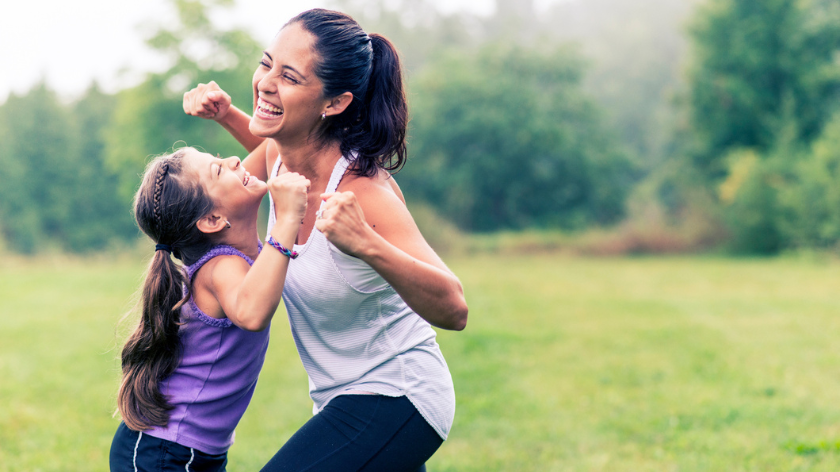Mari Leach, biokineticist at Vitality, shares her advice on how to ensure we’re getting the most health benefits from our workouts – whatever our age.
Exercise in your 20s: Establish good exercise habits in your 20s as it’s easier to make exercise a part of your lifestyle when you’re young.
- At this stage, your energy levels are higher, and you generally have more free time. Use it to explore different exercise types and see what you enjoy.
- Experiment with what intensity of exercise shows the best results on your body. Falling back on what worked in your youth can help you enjoy exercises again and get results when you’re older.
- Create a strong foundation for cardiovascular fitness and strength training by increasing your muscle and bone mass.
- Learn correct exercise techniques and work on your mobility. This will help prevent injuries and develop good muscle memory and movement patterns.
Exercise in your 30s: Life is generally busier and more stressful in your 30s. When time limits you, the quality of your exercise is more important than the quantity.
- A decrease in muscle mass as we get older can add to extra weight gain, as your metabolism slows down.
- High-intensity interval training is very effective to burn calories in a short time. Lengthen your rest periods when you’re unfit and shorten them as you get fitter.
- If you do 15 to 20 reps with a weight and feel like you can do more, the intensity is too light.
- Make exercise part of your daily routine if you can’t fit a full workout in your day. Take the stairs, park your car further away from the shops, engage in active play with your kids or fit a few 10-minute workouts into your day.
Exercise in your 40s: Changes in your hormones, a slower metabolism and fat gain (especially around the waist) is common in the 40s.
- Weight-training should be done at least three times a week as it becomes more important in preventing the onset of osteoporosis. Do 8 to 12 reps of multi-muscle exercises.
- The risk of injury is higher in this age group, so make sure you have good form – even if it takes you longer. Allow adequate recovery between sessions.
- Keep up cardiovascular training for 20 to 60 minutes per session, three times a week at a moderate to vigorous intensity.
- Endorphins get released during exercise that can help with feelings of depression, anxiety, and sadness.
Exercise in your 50s: At this age, your metabolism takes a serious drop, so you pick up weight easily if you’re not mindful. A loss of muscle mass and muscle tone can also affect your posture and bone density, so add in upper and lower back exercises and core exercises.
- Increase your cardio workouts to 20 to 40-minute sessions four to six times a week. Do this at an intensity where you can still answer a short question, but not chat.
- Add stretches for your chest and lats, as well as balance, core strengthening exercises and some weight training sessions to combat the loss of muscle mass as you get older.
- You can still do some impact activities, like running, but remember that you’ll need more recovery time after those sessions than you did before. This is crucial to help you avoid picking up an injury.
- Exercise can also improve your concentration and quality of sleep.
Exercise in your 60s and beyond: In the 60s, musculoskeletal problems are common. Regular exercise can reduce the impact of cardiovascular disease, osteoporosis, Alzheimer’s, diabetes, and certain cancers. It’ll also help you to stay independent and give you the confidence to perform daily tasks.
- Do 4 to 6 sessions a week of exercises like walking, cycling, stair-climbing, hiking or swimming.
- Use free weights, elastic bands, body weight or machines for strength-training.
- Daily balance and core strengthening exercises will help reduce the risk of falling and improve your gait and posture.
- Stretch regularly to maintain sufficient joint space and flexibility, which can help reduce the wear and tear inside your joints.
- Exercise is also beneficial for better brain function and can help prevent memory loss, cognitive decline, and dementia.
Leach concludes, “Staying active can add years to your life. A combination of cardio, strength and balance training can help maintain muscle tone and make everyday tasks easier. Plus, with regular exercise, you’ll likely have more energy, confidence, and cope better with the daily stresses of life. Take the time each day to make exercise a “must” and enjoy the benefits of a fit, healthy body all through your life.”
___
If you are not familiar with specific exercises, or are unsure of suitable exercises for your age, ask a biokineticist or personal trainer for assistance.







